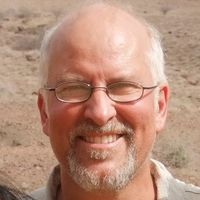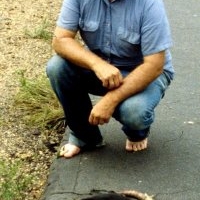
Meadow Campbell
My research and interests are in pre-historic modern human skeletal variation. My dissertation involved regional biological variation during the Middle and Late Archaic periods in the mid-South United States. I am interested in cultural and biological interactions and how these function among hunter/gatherer/collector groups. My research asks "who exchanged mates with whom?" I'm interested in the construction of "kin" among Archaic populations - those who “live each other’s lives and die each other’s deaths” (Sahlins, 2011: 2).
I spend my days in the cadaver lab with future chiropractors, and I love it. My background includes vertebrate histology, forensic anthropology, and bioarchaeology. I have taught lab courses in anthropology, anatomy, histology, and archaeology.
I often spend the summers on archaeological survey or excavations. In that capacity I have had the pleasure of working in Kansas, Texas, State parks in Illinois and Indiana, Yellowstone National Park, and a summer in Drawsko, Poland. I spent three summers at the Mississippian mound center of Kincaid in extreme southern Illinois.
Side projects with which I am still involved include functional demands on craniofacial and dental morphology as they relate to diet, as well as pelvic asymmetry in relation to obstetrical sufficiency and female mortality.
Supervisors: Robert Corruccini and Susan Ford
Phone: 636-230-1935
I spend my days in the cadaver lab with future chiropractors, and I love it. My background includes vertebrate histology, forensic anthropology, and bioarchaeology. I have taught lab courses in anthropology, anatomy, histology, and archaeology.
I often spend the summers on archaeological survey or excavations. In that capacity I have had the pleasure of working in Kansas, Texas, State parks in Illinois and Indiana, Yellowstone National Park, and a summer in Drawsko, Poland. I spent three summers at the Mississippian mound center of Kincaid in extreme southern Illinois.
Side projects with which I am still involved include functional demands on craniofacial and dental morphology as they relate to diet, as well as pelvic asymmetry in relation to obstetrical sufficiency and female mortality.
Supervisors: Robert Corruccini and Susan Ford
Phone: 636-230-1935
less
Related Authors
Meadow Campbell
Saint Louis University
Habiba Chirchir
Marshall University
René Bobe
University of Oxford
Briana Pobiner
Smithsonian Institution
Nicci Sherwood
University of Mpumalanga
Terry Harrison
New York University
Greg McDonald
Colorado State University
Marcos Fernández-Monescillo
CONICET - CCT-MENDOZA
InterestsView All (34)








Uploads
Papers by Meadow Campbell
Conference Presentations by Meadow Campbell
Posters by Meadow Campbell
Univariate, bivariate, and multivariate statistical procedures were used to examine differences in occlusion and absolute and relative size between the two samples. The results indicate significant differences in craniofacial development and occlusion between savanna baboons reared on soft diets and those who experienced normal dietary conditions in the wild. Paramount among these differences was significantly shorter palates in the SDE group. These results provide further evidence that the biomechanical stresses associated with chewing have a measurable effect on the growth and development of the masticatory apparatus leading to variation in occlusion and craniofacial development between individuals experiencing long term variation in dietary consistency. The findings reported here have implications for the interpretation of both anthropological and clinical data.
Thesis Chapters by Meadow Campbell
Univariate, bivariate, and multivariate statistical procedures were used to examine differences in occlusion and absolute and relative size between the two samples. The results indicate significant differences in craniofacial development and occlusion between savanna baboons reared on soft diets and those who experienced normal dietary conditions in the wild. Paramount among these differences was significantly shorter palates in the SDE group. These results provide further evidence that the biomechanical stresses associated with chewing have a measurable effect on the growth and development of the masticatory apparatus leading to variation in occlusion and craniofacial development between individuals experiencing long term variation in dietary consistency. The findings reported here have implications for the interpretation of both anthropological and clinical data.